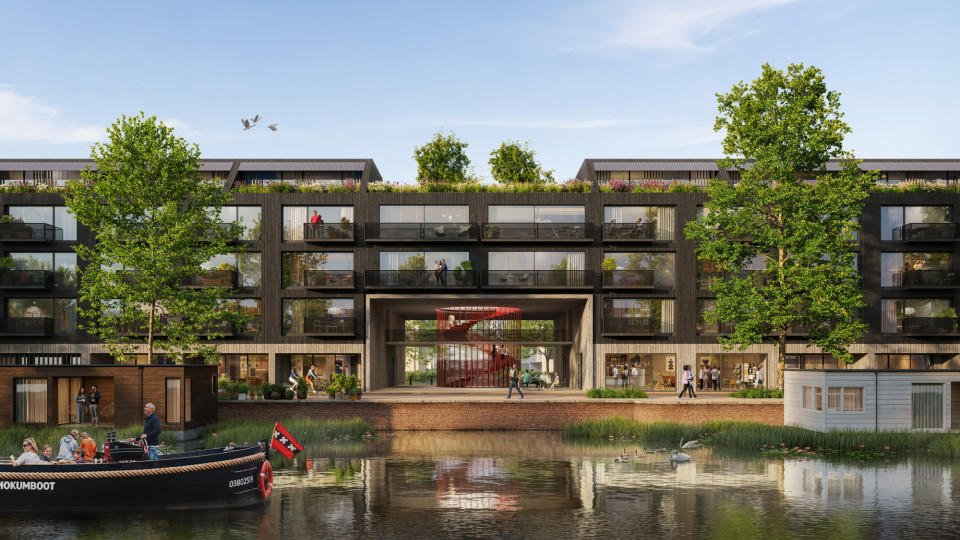As part of its ongoing expansion of the city of Amsterdam, the local government is creating a new island on the eastern edge of the city. Zeeburgereiland, as it is called, lies between a stretch of the A10 ring road, the Piet Hein Tunnel, and the neighbourhoods of Amsterdam East and North, and is easily accessible from anywhere within the A10. Several new neighbourhoods are due for construction here over the next few years, among which is the Sportheldenbuurt, whose plans include healthcare centres and shops, and is expected to eventually boast a population of over 10,000. Paul de Ruiter Architects were commissioned to design two apartment blocks with 110 rental and owner-occupied apartments in the south-eastern part of the neighbourhood. The mix of housing types is designed to facilitate diversity and support the development of a socially sustainable community.
Facilitating interaction to enhance quality of life
One of the biggest contributors to the quality of life in any neighbourhood is public space that encourages people to spend time outdoors. Thus, not only was this critical to our design, but it also gave us the opportunity to promote interaction between neighbours from the two blocks, one of which we devoted to owner-occupied apartments and the other to rental apartments of varying dimensions. To this end, we turned the space between the blocks into a lush garden that people would want to spend time in, regardless of age or whether they happened to be alone or with their family. We situated the car park underground in order to devote as much of the site as possible to this communal garden.
The living building
The street-facing apartments in the three floors that constitute the plinth-like base of each block overlook or open out onto yet more public space in the form of grass terraces, thereby providing further inducement to residents to spend time outdoors and hopefully meet their neighbours. Living rooms are outward-facing for the same reason, with residential amenities situated at the heart of the blocks. The apartments above the base are recessed, thereby providing additional public space in the form of a 360-degree terrace. The apartments on the uppermost floors come with balconies. The result of these provisions is that both blocks brim with life, as human activity is in evidence from every vantage point.
Project details
Gegevens
| Location | Zeeburgereiland, Amsterdam |
| Gross floor area | 15,300 m² |
| Project description | 110 apartments with underground parking for 88 cars |
| Start design | June 2015 |
| Start construction | June 2017 |
| Completion | Augustus 2018 |
Ontwerpteam
| Client | AM |
| Design | Paul de Ruiter Architects bv |
| Projectleader | Raymond van Sabben |
| Project architects | Paul de Ruiter & Noud Paes |
| Project team | Martijn van Gameren, Ronald Hageman, Sander van de Weijer, Florina Raileanu, Richard Buijs |
| Construction consultant | Adams bouwadviesbureau |
| Building services engineering | DWA |
| Structural engineering | DWA |
| Contractor | BAM Wonen (Amsterdam) |
| Photography | Pieter Kers |













